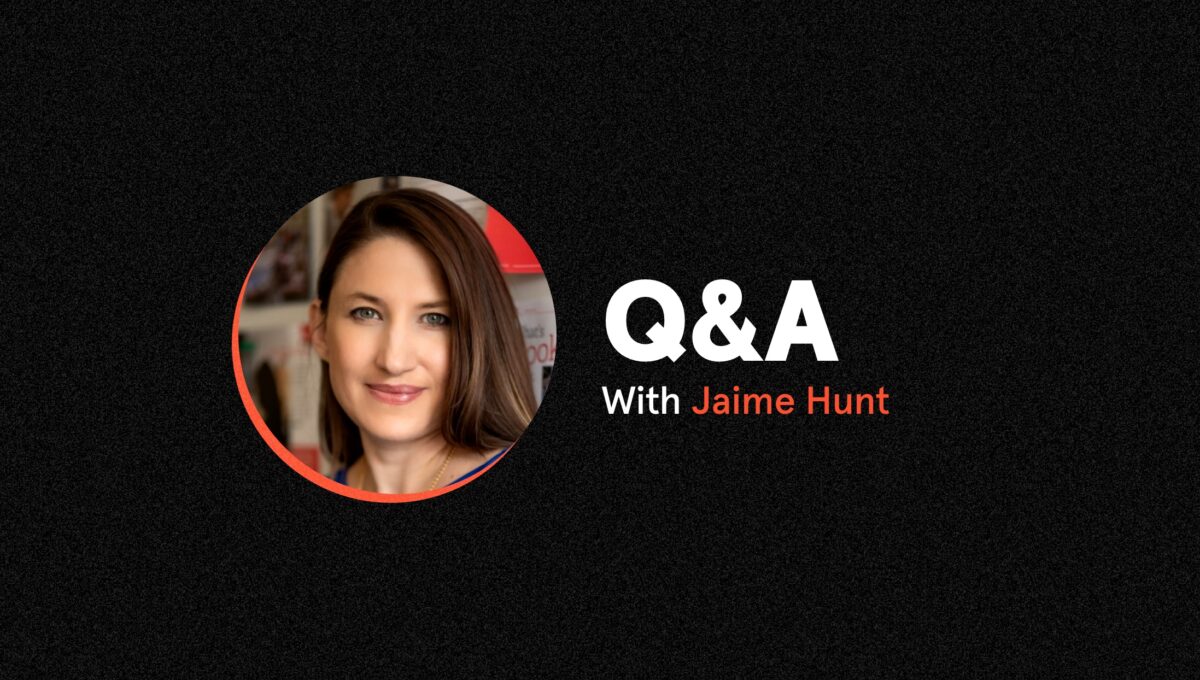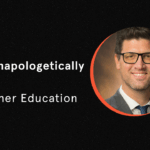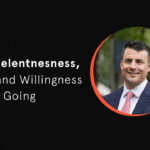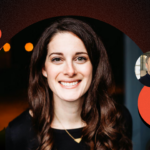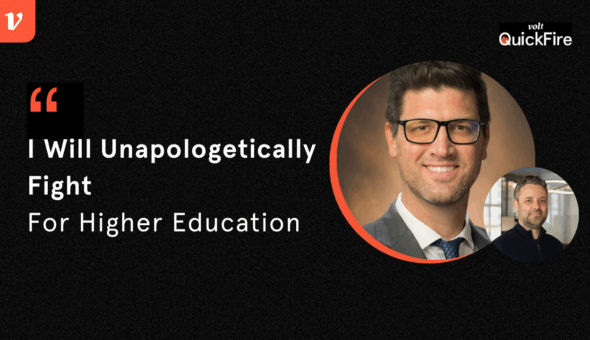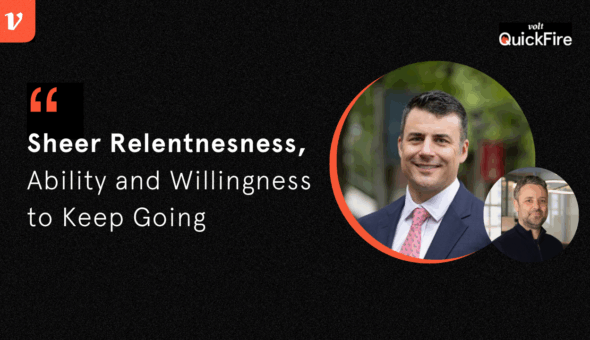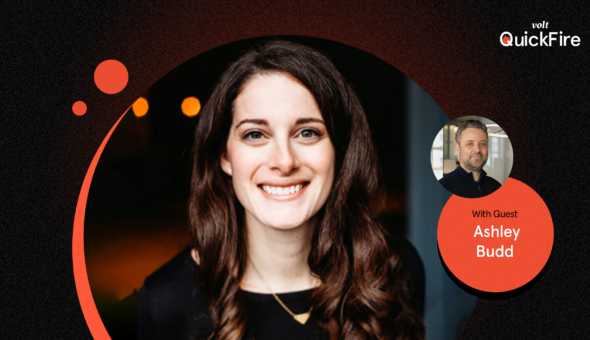In this exclusive interview, Volt sat down with Jaime Hunt, vice president and chief marketing officer for Old Dominion University. Moving from a career in print journalism to leadership roles in public relations and marketing within higher education, Jaime believes in the transformative power of education. Join us as we discuss how marketers need to embrace a strategic mindset, an innovative approach and a proactive stance in addressing evolving challenges in the industry.
Jaime, can you describe your professional journey and what led you to Old Dominion University?
I began my career as a print journalist and spent five years covering K-12 education and writing news and feature stories. I eventually realized that I couldn’t sustain a career in journalism in a city as expensive as Minneapolis.
As an idealist, I wanted to work in an industry that I felt I could strongly support. Higher education completely fit that bill.
Since 2004, I have served in various public relations and marketing leadership roles at six institutions: Northwestern Health Sciences University, the University of Wisconsin-Oshkosh, Radford University, Winston-Salem State, Miami University of Ohio, and now Old Dominion University.
What was the single driving force behind your decision to work in higher education?
I am the first person in my family to graduate from college. My degrees have opened doors for me that wouldn’t have been possible without them. I know that the work I do is making a difference, and that’s my No. 1 priority.
Was Old Dominion University well-established and easily recognizable or did you have to fight for brand recognition?
I have been at ODU since September 2022. The main reason I was attracted to the role was the opportunity to build a marketing communications operation from the ground up.
The university historically has been inconsistent in telling its story. My team is charged with telling that story and building brand recognition in the Commonwealth of Virginia and beyond. The university has changed significantly over the past 25 years, but many people continue to perceive it as it was in the past.
We are now a research powerhouse merging with Eastern Virginia Medical School. When the merger is complete, ODU will offer the largest portfolio of health sciences degrees in the Commonwealth. That combined with our recent R1 categorization should help put us on the map.
Where should marketing sit in relation to the institutional hierarchy and organizational structure?
Marketing should have a seat at the leadership table. To be effective, we need to be closely aligned with the institution’s overall strategy, goals and values. Marketing should have a direct line of communication with the institution’s leadership to ensure that marketing efforts are aligned with the overall direction of the institution.
There seems to be a greater push for institutions to use agencies in their marketing plans. What do you think of that shift in the industry?
I think this trend is partly due to staffing challenges. Finding and retaining skilled marketing professionals can be challenging, especially for smaller institutions. Agencies can also provide specialized skillsets that can be difficult to hire for at the institutional level.
In addition, agencies can provide scalability and flexibility that in-house teams may not be able to match. For example, an institution may have a sudden need for additional marketing support. An agency can quickly provide the additional resources needed to meet the demand.
What do you think are the biggest challenges facing higher education marketers at this point?
There are so many clear and present challenges: increased competition from other educational institutions, as well as free or inexpensive learning opportunities; the changing demographics of prospective students; and rapid changes in technology. We have yet to see how AI is going to change our work, but I believe it will have as big an impact on our efforts as the advent of the Internet.
As you noted the full impact of AI is still unknown, but there have already been reports of spam bots artificially inflating campaign effectiveness. How do you advise counteracting this inflation?
Spam bots artificially inflating the effectiveness of marketing campaigns can be a major concern. These bots can generate false clicks, views and engagement, making it difficult to accurately measure the success of a campaign and wasting marketing resources.
Monitoring campaign metrics on a regular basis can help identify any unusual spikes in engagement or activity that may be the result of spam bots. Another tactic is to focus on quality engagement: Rather than focusing solely on metrics such as clicks and views, focus on quality engagement from real users. This can include metrics such as time on site, bounce rate, and conversion rate.
What is the key to marketing an institution effectively?
Develop a comprehensive and targeted marketing strategy that targets the right students at the right time with the right message. To do that, you have to deeply understand your audiences, and you must do the research to understand what will resonate with them. It’s also imperative to have a strong brand identity that differentiates you in the marketplace.
Do institutions need a reset or rebrand to appeal to the new generation of students who may think that the value of college education has diminished?
It’s possible that some institutions may need to reset or rebrand. If an institution is facing declining enrollment or struggling to attract students, it may be necessary to take a closer look at branding and marketing strategies. This could include rethinking the messaging, updating the visual identity, or even renaming the institution to better reflect the values and mission.
However, it’s important to note that a rebrand or reset is not a one-size-fits-all solution, and it should be approached with caution. A rebrand can be a significant investment of time, resources and money, and it may not always be necessary or effective. Instead of immediately jumping to a rebrand or reset, institutions should start by listening to their target audiences and understanding their needs and concerns.
Speaking of which, how do you counteract the growing movement that the value of college no longer offsets the increasing price tag?
That’s a big challenge, to be sure. Marketers need to ensure they are communicating the value of a degree with prospective students and their families. Highlight the benefits of higher lifetime earnings and better job opportunities. Showcase the outcomes of your graduates, as well as the programs you have in place to support student success. And be transparent — provide clear information on the cost of attendance, financial aid opportunities, and other forms of financial aid.
What are your personal goals for Old Dominion University as you move forward?
My goals are to build the university’s reputation by telling its story to the right people at the right time with the right message, create a culture of collaboration and alignment across the organization and build a best-in-class marketing team that stays on the cutting edge of marketing and communications.
